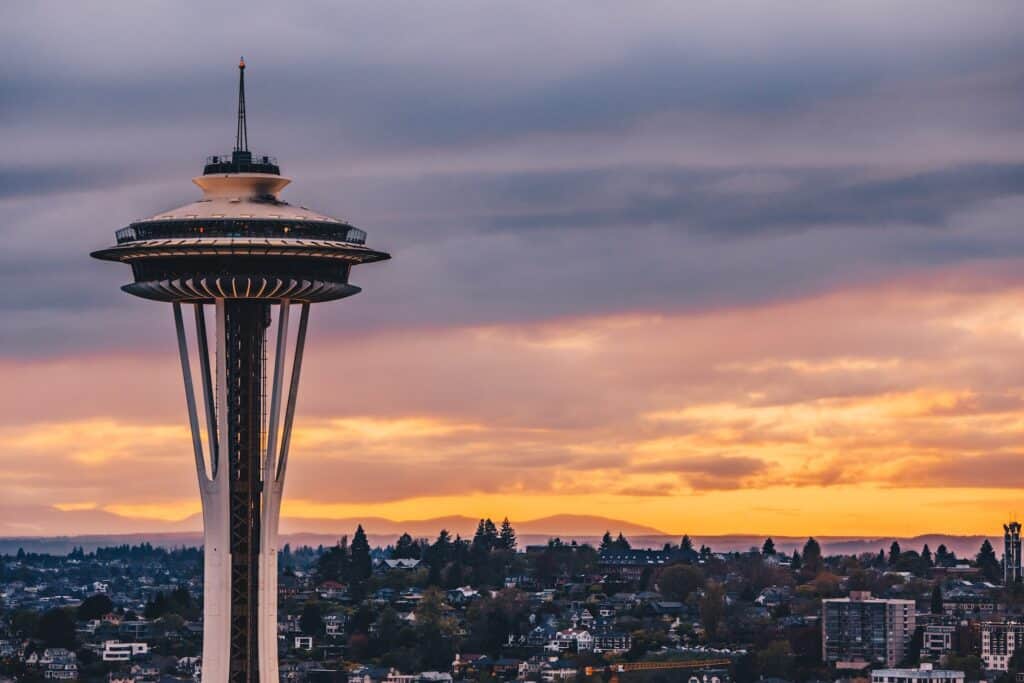Washington
Featuring some of the most breathtaking sceneries you will ever witness, the Washington State truly has a lot to boast when it comes to nature and wildlife. From its snowcapped mountains, lush green landscapes, and charming cities, get ready to fall in love with the State of Washington. You might just book your flight right away.
Geography
The State of Washington is located in the Pacific Northwest region of the United States. It is a relatively large state being the 18th largest state in the country. It has over 7.7 million people living within the state, mostly concentrated in the Seattle metropolitan area. Washington is pretty dense considering it is the 13th most populated state in the country.
Washington is bordered by Idaho, Oregon, and the Pacific Ocean. This state is typically divided into two for a more accurate geographic understanding. Its two parts are Western Washington and then, of course, Eastern Washington. Now, the Western part of Washington is pretty mountainous, featuring higher altitudes than the rest of the state. For the most part, the region is covered with dense forests with some temperature rainforest. A number of active volcanoes also dot this region.
The eastern part, on the other hand, is flatter and dryer than its western counterpart. It has large areas with truly arid deserts while also having really fertile soils due to its access to rivers and dams. This is also where most of Washington’s cities are located.
History
One of the oldest and most complete skeletal remains of a prehistoric human discovered in North America was excavated in the state of Washington. Like any other state, the state of Washington has been inhabited by aboriginals for thousands of years, thriving, before the Europeans arrived and colonized the region. It is said that it is the smallpox epidemic, brought by the Europeans themselves, that devastated and almost wiped off the aboriginal population.
The first recorded exploration in the area was by the Spanish in 1775. The creation of the Washington state, or the then Washington Territory, was from the need for more settlements as the population in Oregon territory grew exponentially over the years. This explains why the State of Washington entered the union pretty late, being the 42nd state of the United States in November of 1889.
Weather
Washington’s weather and climate vary greatly from west to east. The Pacific Ocean naturally plays a large influence on the climate and weather throughout the whole state. A high-pressure cyclone in the Pacific Ocean means dry seasons. Consequently, a low-pressure cyclone trend in the same ocean would mean wet season throughout the state.
For simpler understanding, the western part of Washington has a Mediterranean climate. A dryer semi-arid climate prevails on the eastern part. The west tends to receive the most precipitation throughout the year. Of course, Washington already goes with the reputation of being gloomy and wet for the most part so just dress and prepare accordingly.
Tourism
It is not all gloom and doom in the Washington State, although that can certainly be part of its charm. The state features some incomparable sceneries from the Olympic National Park, San Juan Islands, Mount Rainier National Park, to North Cascades National Park. These are just some of the parks and destinations outdoor enthusiasts would surely have a blast from.
The state of Washington is truly a one-of-a-kind state to visit.
Key information about Washington
📍 Area: 184,827 km2
👥 Population: 7,705,281
🏛️ Capital: Olympia
🏢 Major cities: Seattle, Spokane, Tacoma, Vancouver, Bellevue
🔢 Number of counties: 39
📋 Postal Abbreviation: WA
📖 Primary language/s: English
📌 Nearby states/countries: Oregon, Idaho, British Columbia – Canada

